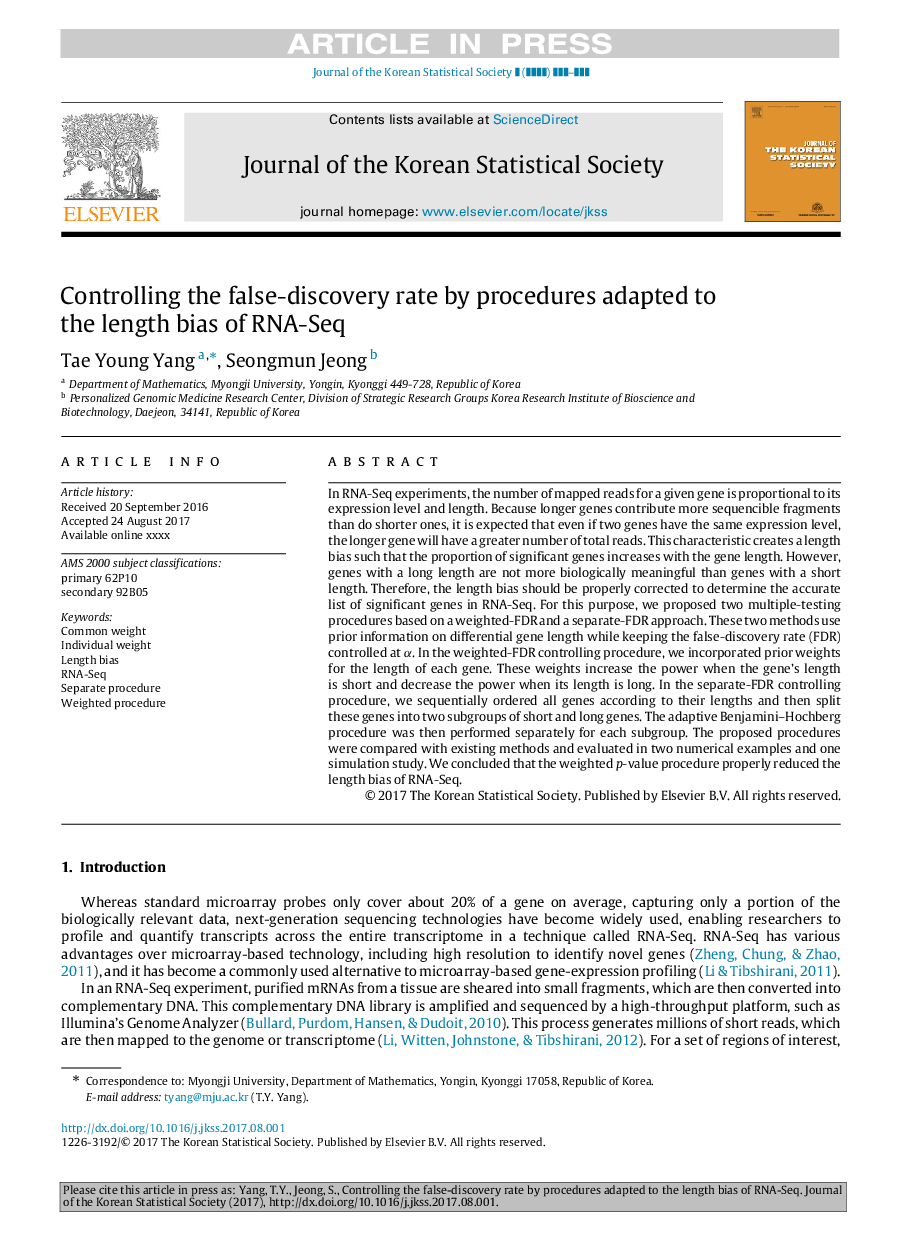| Article ID | Journal | Published Year | Pages | File Type |
|---|---|---|---|---|
| 7546176 | Journal of the Korean Statistical Society | 2018 | 11 Pages |
Abstract
In RNA-Seq experiments, the number of mapped reads for a given gene is proportional to its expression level and length. Because longer genes contribute more sequencible fragments than do shorter ones, it is expected that even if two genes have the same expression level, the longer gene will have a greater number of total reads. This characteristic creates a length bias such that the proportion of significant genes increases with the gene length. However, genes with a long length are not more biologically meaningful than genes with a short length. Therefore, the length bias should be properly corrected to determine the accurate list of significant genes in RNA-Seq. For this purpose, we proposed two multiple-testing procedures based on a weighted-FDR and a separate-FDR approach. These two methods use prior information on differential gene length while keeping the false-discovery rate (FDR) controlled at α. In the weighted-FDR controlling procedure, we incorporated prior weights for the length of each gene. These weights increase the power when the gene's length is short and decrease the power when its length is long. In the separate-FDR controlling procedure, we sequentially ordered all genes according to their lengths and then split these genes into two subgroups of short and long genes. The adaptive Benjamini-Hochberg procedure was then performed separately for each subgroup. The proposed procedures were compared with existing methods and evaluated in two numerical examples and one simulation study. We concluded that the weighted p-value procedure properly reduced the length bias of RNA-Seq.
Related Topics
Physical Sciences and Engineering
Mathematics
Statistics and Probability
Authors
Tae Young Yang, Seongmun Jeong,
